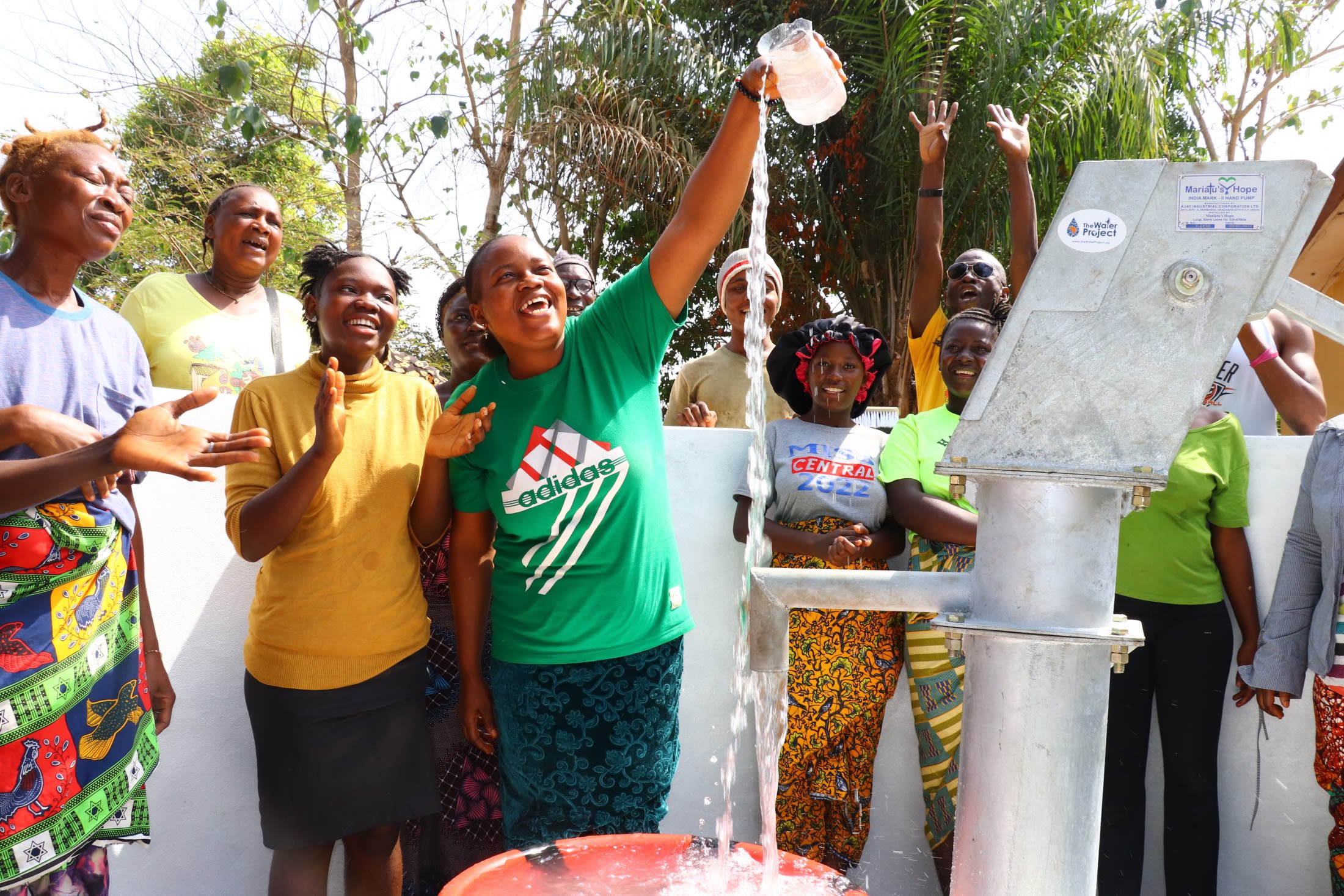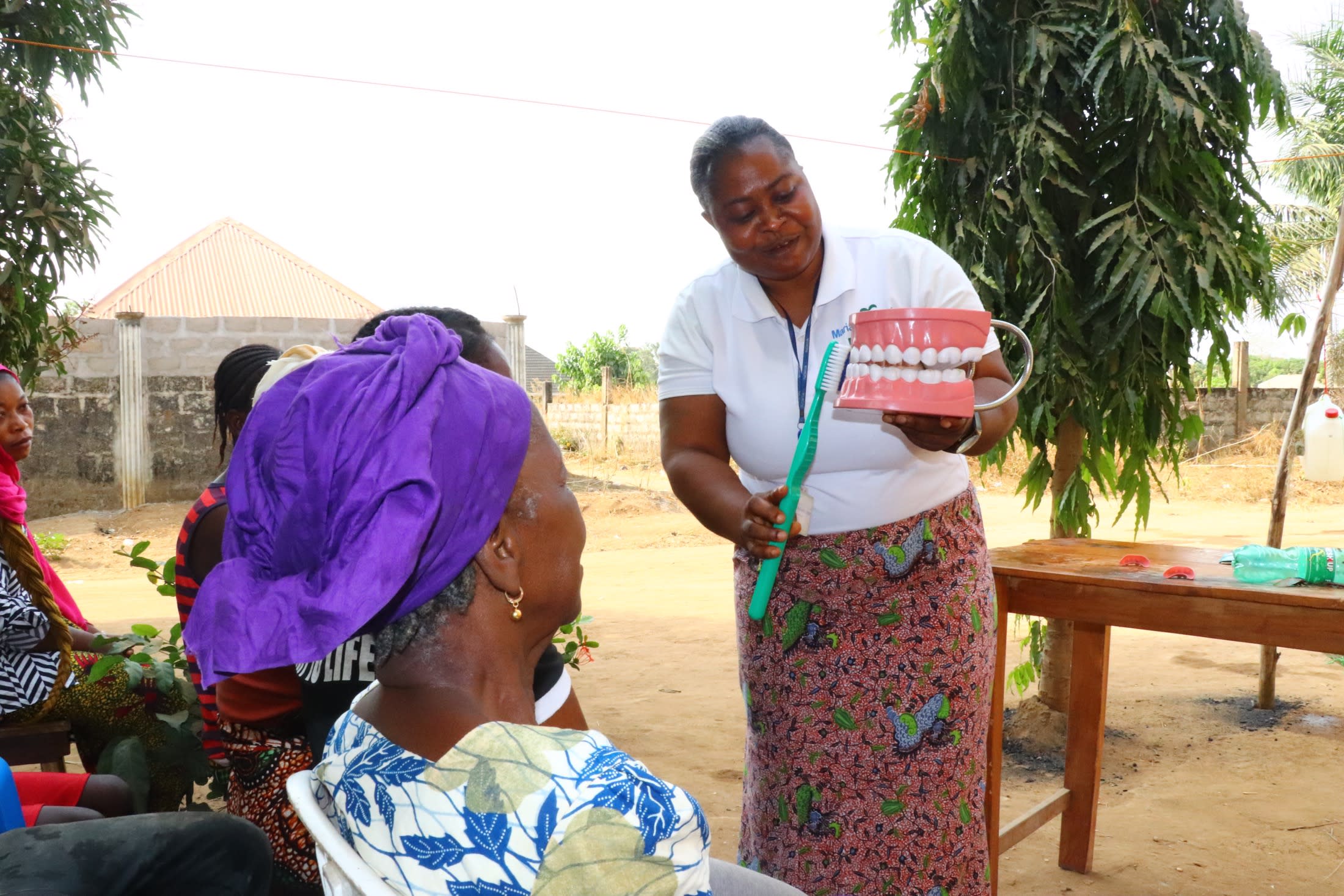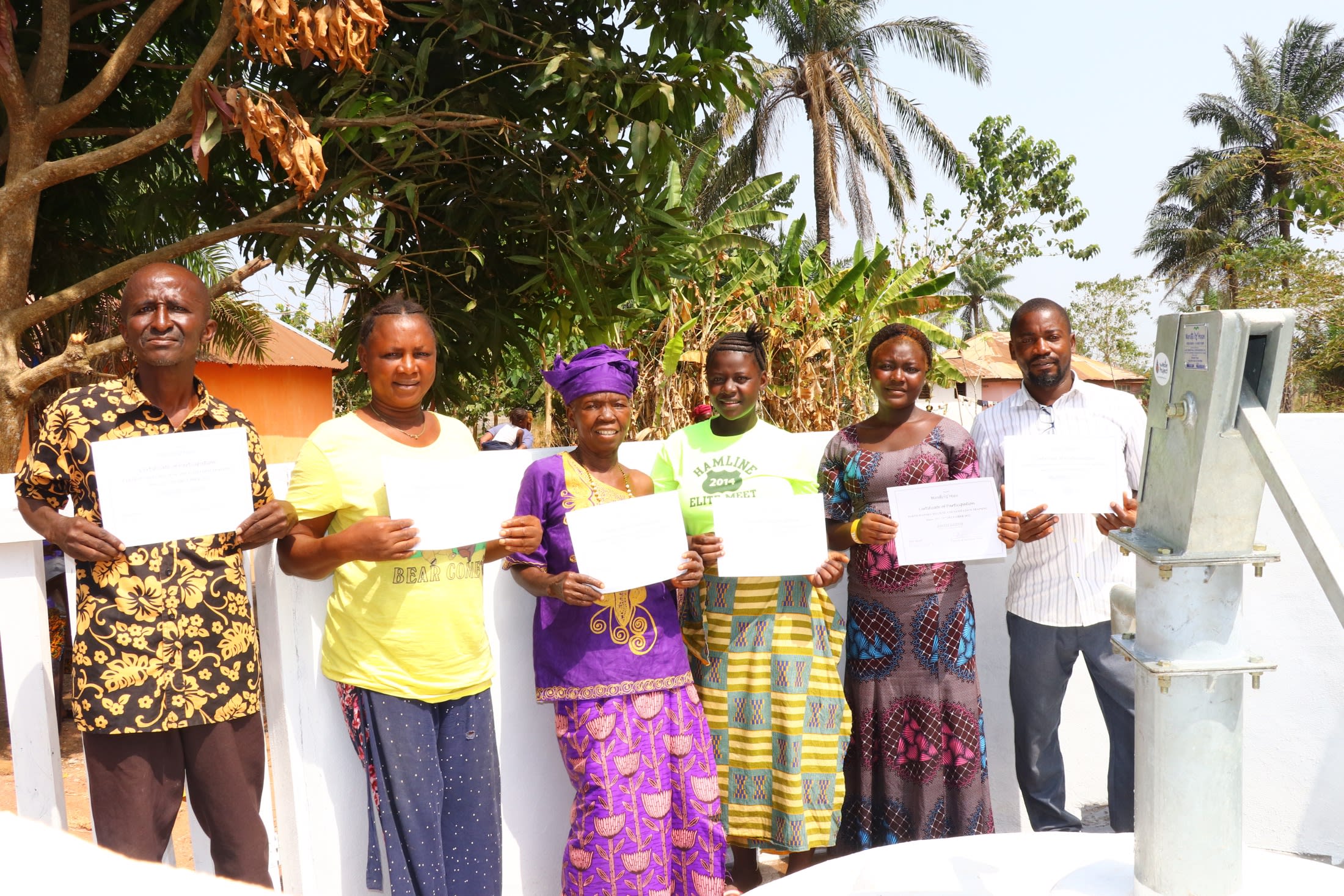People come from miles around for the good telecommunications service in the bustling community of Tintafor. But many people don't stay once they find out the community's water situation.
This section of Tintafor only has one unprotected hand-dug well (pictured below) for all the 128 people who live here, and it has numerous issues. During the dry seasons (from at least March to May each year), the water level in the well falls or dries out completely. But when the well does have water, its quality is highly suspect.
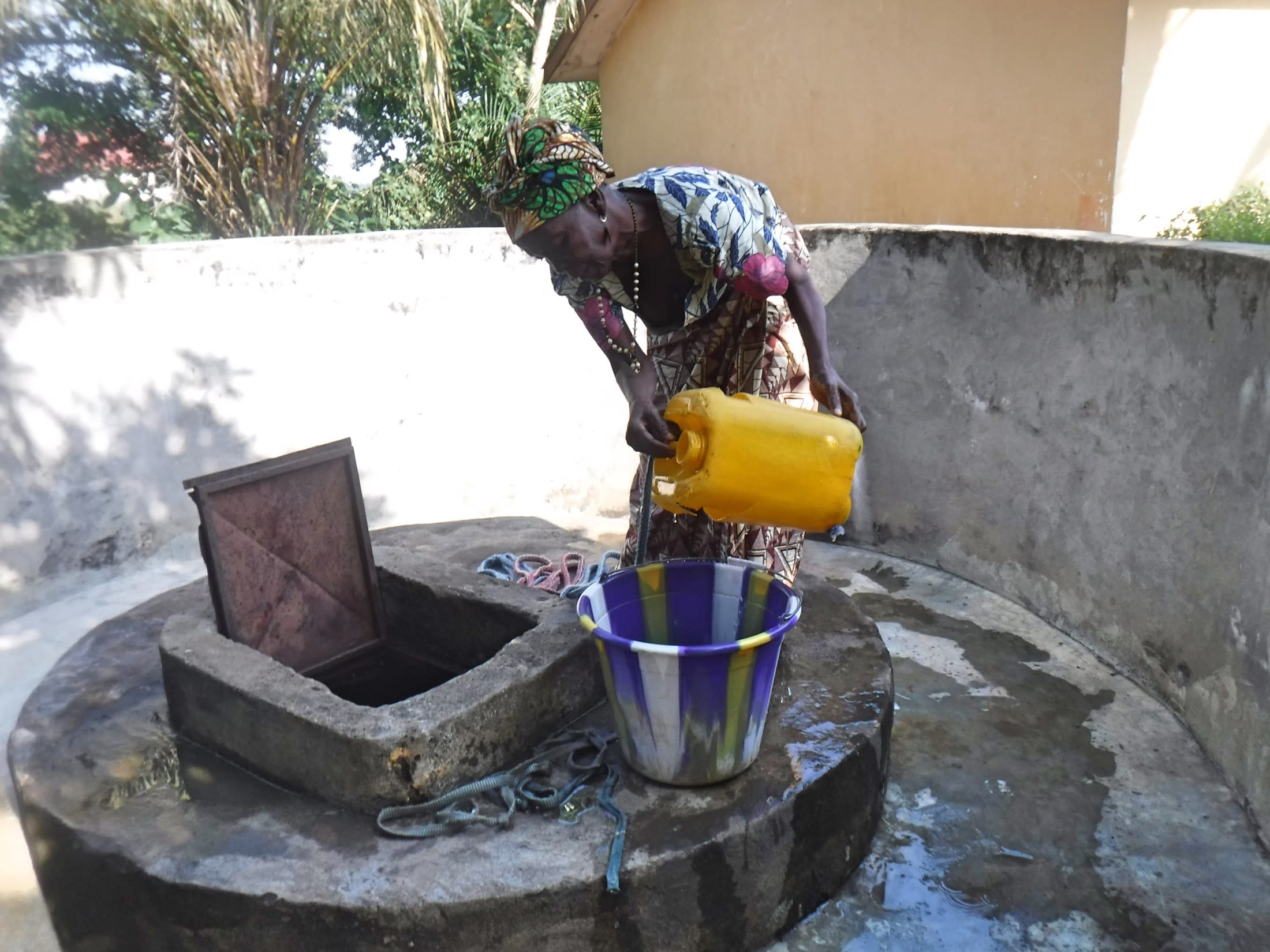
The water hasn't been tested or treated in three years. And each time someone fetches water, they lower a bucket and rope down inside, inviting dirt and bacteria into everyone's drinking water. Because of this, community members reported cases of diarrhea, typhoid, and worm infestations.
But although the poor water quality is chief among the well's problems, that is far from its only issue. There aren't enough water sources for all the people in Tintafor, even with a well we installed in a neighboring community, which serves as the alternative water source for the people of Tintafor. But, unfortunately, both sources are constantly overcrowded: a problem made worse by the fact that drawing water up from the hand-dug well is labor-intensive.
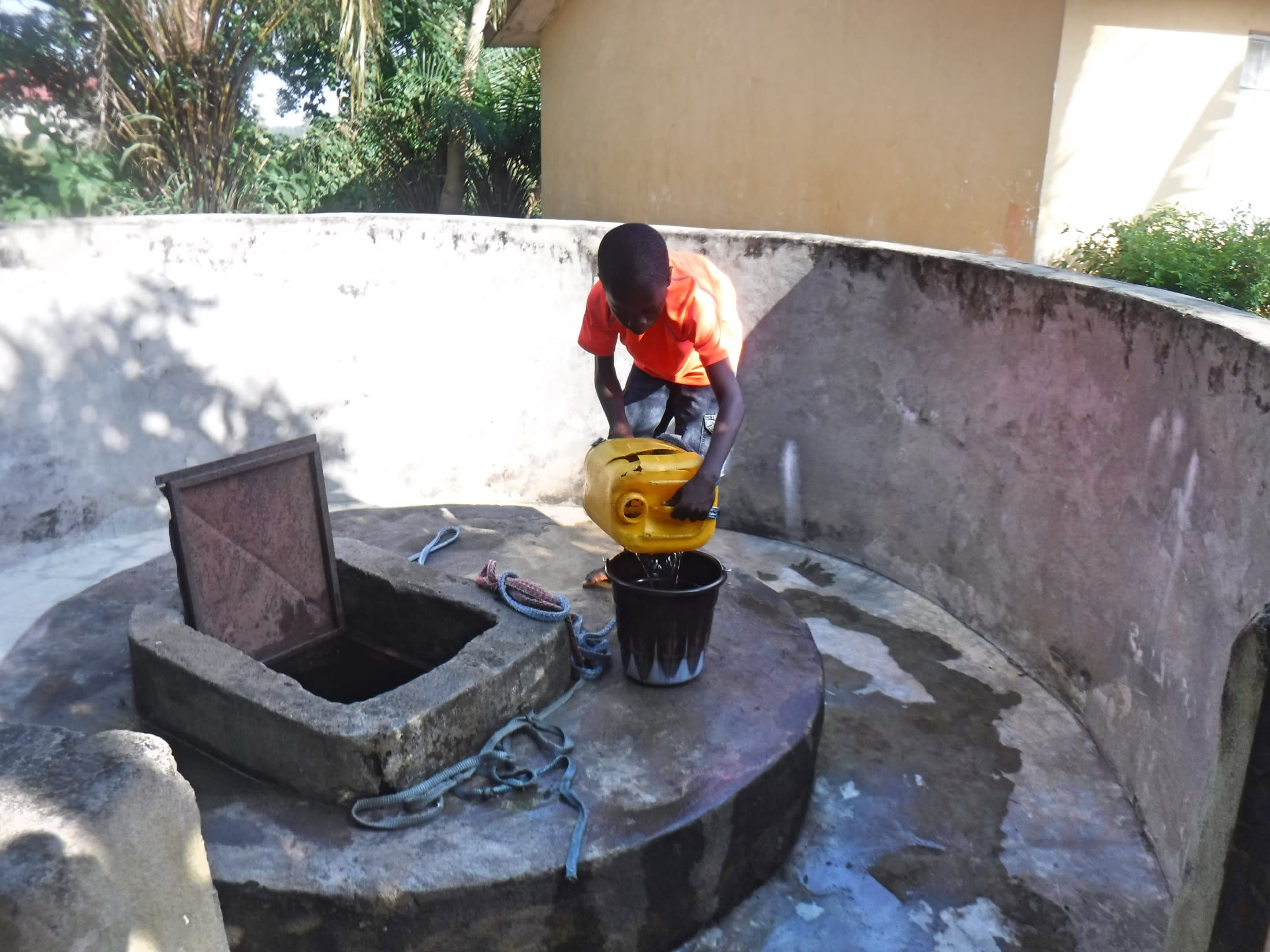
"To bend down and draw water from the well is difficult," said our field officer Alimamy. "Most times, the [bucket] they use to fetch water drops on the ground, further contaminating [the water]. It requires a lot of strength to be able to fetch water from the open well, limiting the children from accessing the water point. Fetching water in most communities is the responsibility of women and children. Hoisting the [bucket] filled with water a distance of 39 feet can be very dangerous, limiting school children from fetching it. They have to rely on the help of their parents or older children. This normally holds them back, especially when they have a lot of things to do."
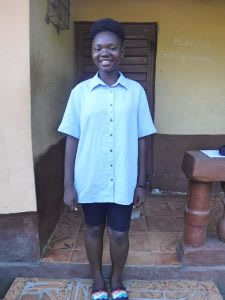 "The water situation in this community is affecting me as a pupil," said 14-year-old Theresa (shown to the left). "As a pupil, I need a lot of water when I want to go to school and when I return from school. In the morning, there are [a] lot of people at the water well who will prevent me from fetching water at the time I need it. I will keep waiting until my turn to fetch water. By the time I fetch the water I need, it is already late to go to school, as the school where I am attending is far away from this community. My academic performance is always affected due to this problem. When I return from school, I also need water to launder my uniform and bathe before going for studies."
"The water situation in this community is affecting me as a pupil," said 14-year-old Theresa (shown to the left). "As a pupil, I need a lot of water when I want to go to school and when I return from school. In the morning, there are [a] lot of people at the water well who will prevent me from fetching water at the time I need it. I will keep waiting until my turn to fetch water. By the time I fetch the water I need, it is already late to go to school, as the school where I am attending is far away from this community. My academic performance is always affected due to this problem. When I return from school, I also need water to launder my uniform and bathe before going for studies."
When the hand-dug well dries out, things worsen for Theresa.
"The other challenge I face is when the water changes color," Theresa explained. "The color of the water [becomes] just like clay. This is the sign the well gives when it wants to run out of water. Fetching water for drinking becomes a problem. When the water well in our community becomes dry, I walk to other communities to fetch water that is pure and safe for drinking purposes. The alternate water source is always overcrowded because it is the only source that provides safe and pure drinking water for our community and the community where it is located. So every morning, it is choked with a different set of people. The congestion of people will lead to theft cases and airborne diseases. This will also prevent me from getting sufficient water for myself and my family."
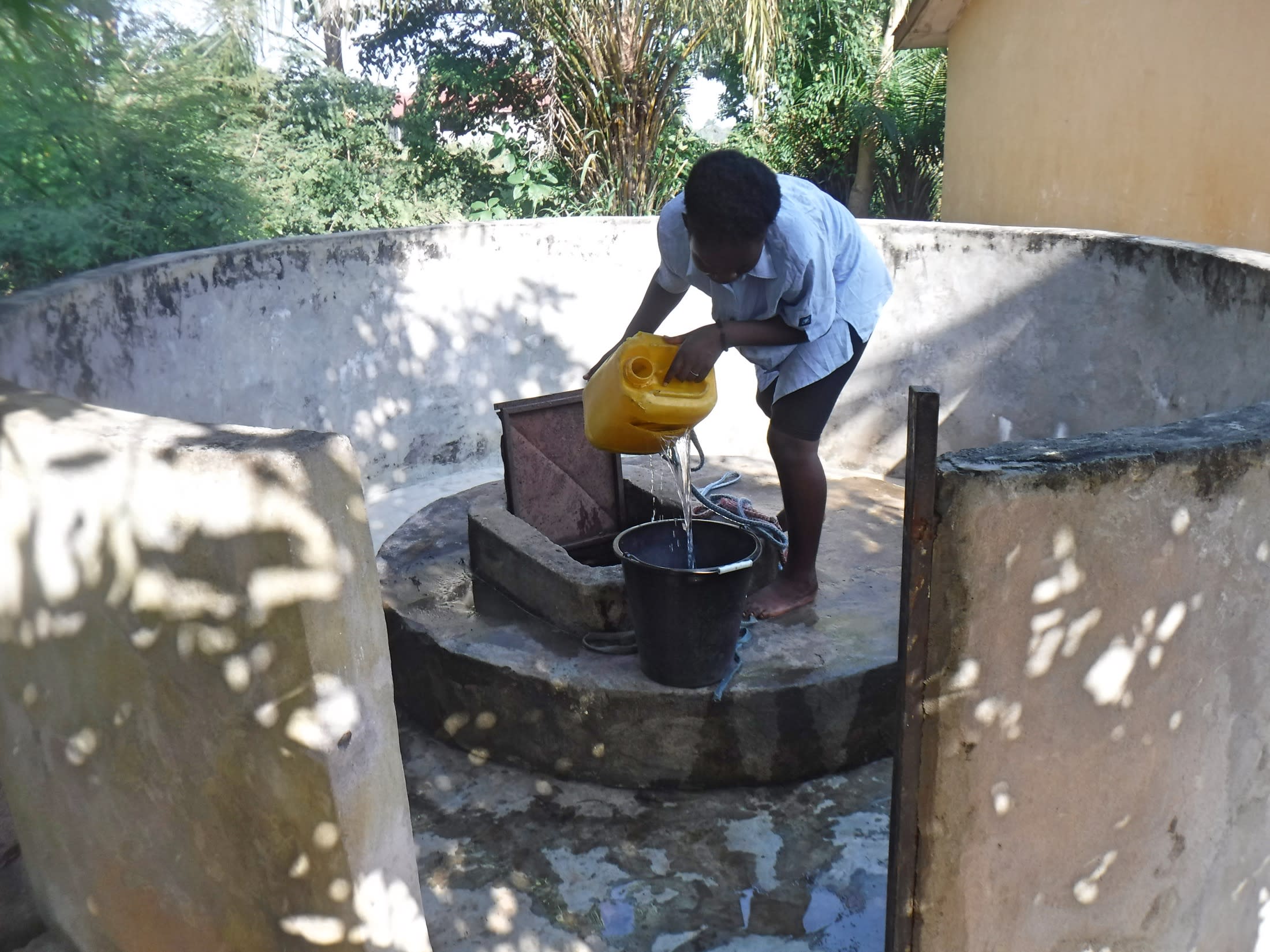
Because of the crowding and the lack of water at the hand-dug well, there is never enough water for the community members to do all the things they need to accomplish in a day — a problem that only compounds the longer it goes on.
"I am also responsible for the cleaning of the house and the household utensils (dishes)," Theresa explained. "This could be difficult if there is no sufficient water in the house. Sometimes, I will leave the household utensils unwashed due to insufficient water in the house."
And, unfortunately, leaving chores undone for some households translates to reduced income, as is the case with 35-year-old food trader Grace Amara (shown below).
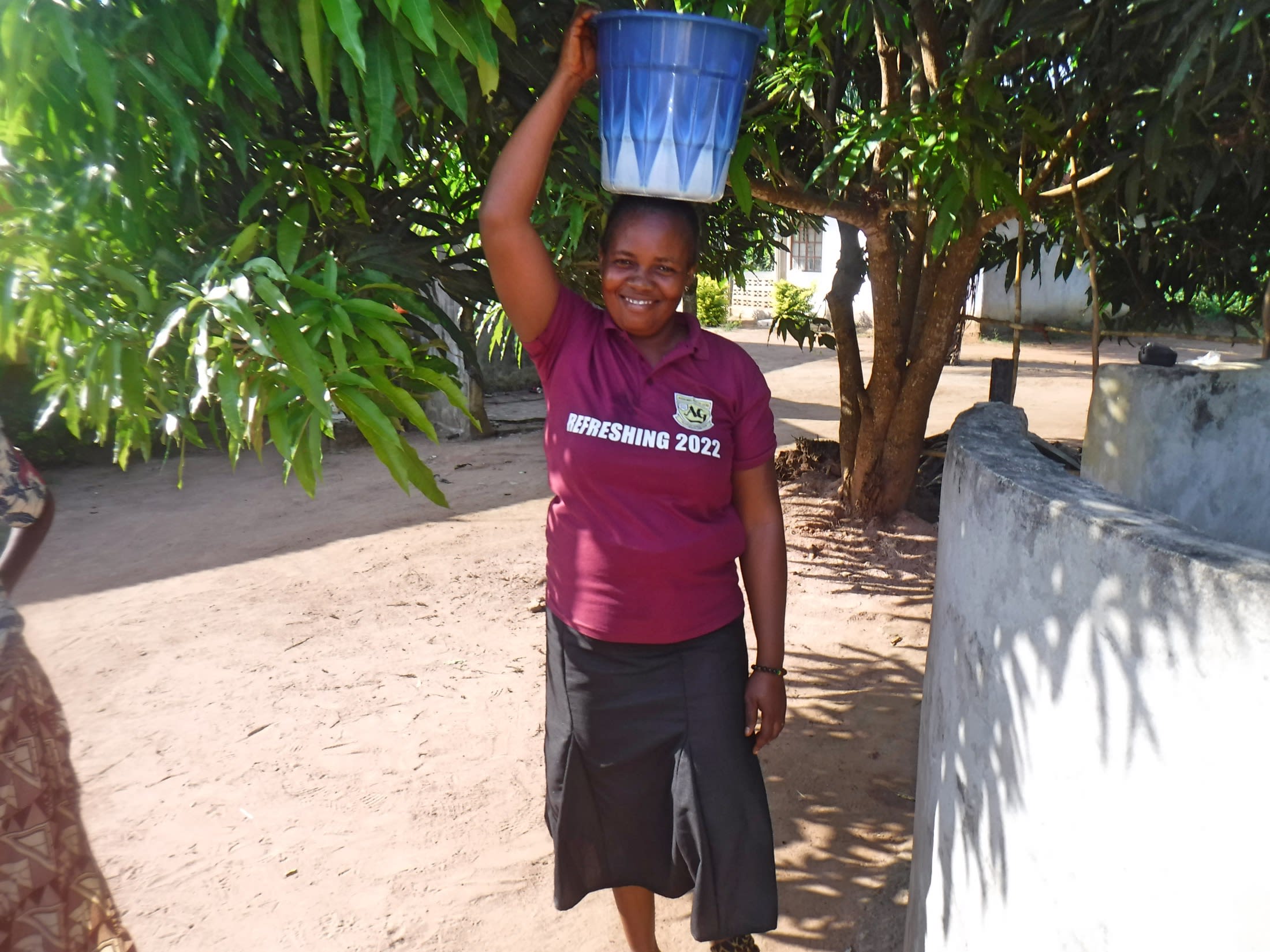
"I am unable to sell enough food due to the lack of sufficient, pure, and safe drinking water in the community," Grace explained. "The people who normally come to me to buy food need safe and pure drinking water. If there is no safe and pure drinking water, they will not come to buy food. This will prevent me from getting the income I expect for a day.
"Our water well is not providing safe and pure water, which is why I normally [go] to the other community to fetch water. The distance prevents us from fetching enough water that will serve me and my family, including my customers. Also, I need sufficient water for cleaning the house. This can be impossible if there is not sufficient water in the house, and hence leads to the untidiness of the house.
"As a housewife and trader, I need water for laundry and bathing. Laundry of my clothes will always be difficult when there is a water crisis in my community. It will take some time before I get enough water to [do] the laundry work. Also, I need water to bathe every morning and evening. If there is no water at home, I will not be able to bathe on time, especially in the morning hours. Sometimes I go to bed without bathing. It is very important to have sufficient water in the community to help eradicate all the problems I have highlighted above.
"It will be an opportunity for me and the entire community if this water well is rehabilitated so we can have safe and pure drinking water in our community," Grace concluded. "Also, our community will no longer face a water crisis because this water well will provide sufficient water for the community."
Theresa, too, is already dreaming of life after the community well is fixed. "Our cry for sufficient, pure, and safe drinking water will be over, and my academic performance will not be affected again."
Here’s what we’re going to do about it:
Well Rehabilitation
The well marked for this overhaul is dry for a few months every year and needs major work to supply adequate, clean water to the community year round. The pump will be removed, and a hand auger will be lowered inside and powered by a drill team. This hand auger will allow the team to drill several meters deeper to hit a sufficient water column that will ensure the well supplies water throughout all seasons.
As the team drills, casing will be installed, transforming the bottom of this hand-dug well into a borehole. PVC piping will connect this lower system directly to the pump, a construction that we know will also improve the quality of water.
Once this plan is implemented, everyone within the community will have access to safe drinking water in both quality and quantity, even through the dry months.
Hygiene and Sanitation Training
There will be hygiene and sanitation training sessions offered for three days in a row.
After our visit, the hygiene and sanitation trainer decided it would be best to teach community members how to build a tippy tap (a hand-washing station built with a jerrycan, string, and sticks). They will use these tippy taps for handwashing demonstrations, and will also teach about other tools like dish racks and the importance of properly penning in animals.
These trainings will also strengthen the water user committee that manages and maintains this well. They enforce proper behavior and report to us whenever they need our help solving a serious problem, like a pump breakdown.
















